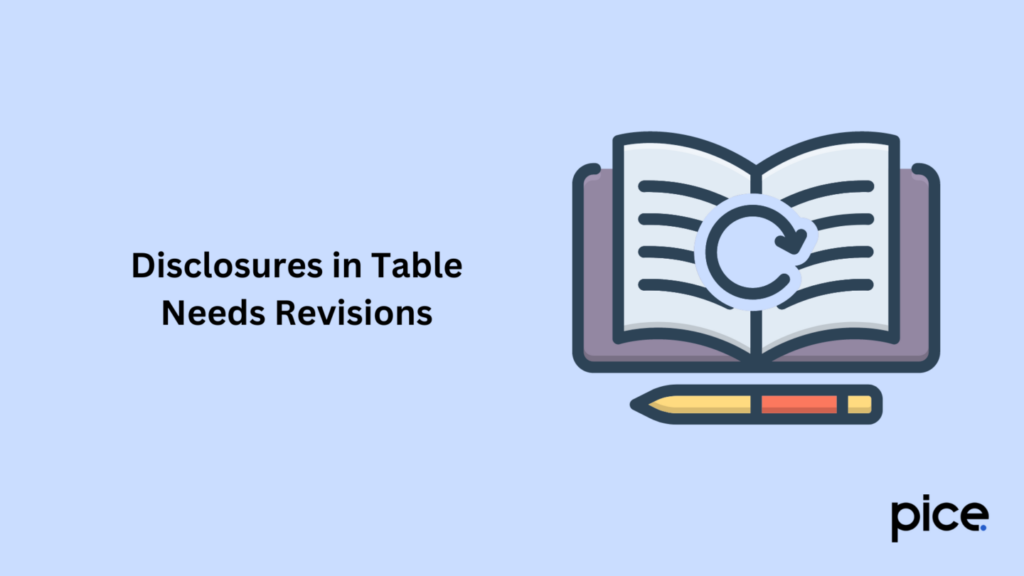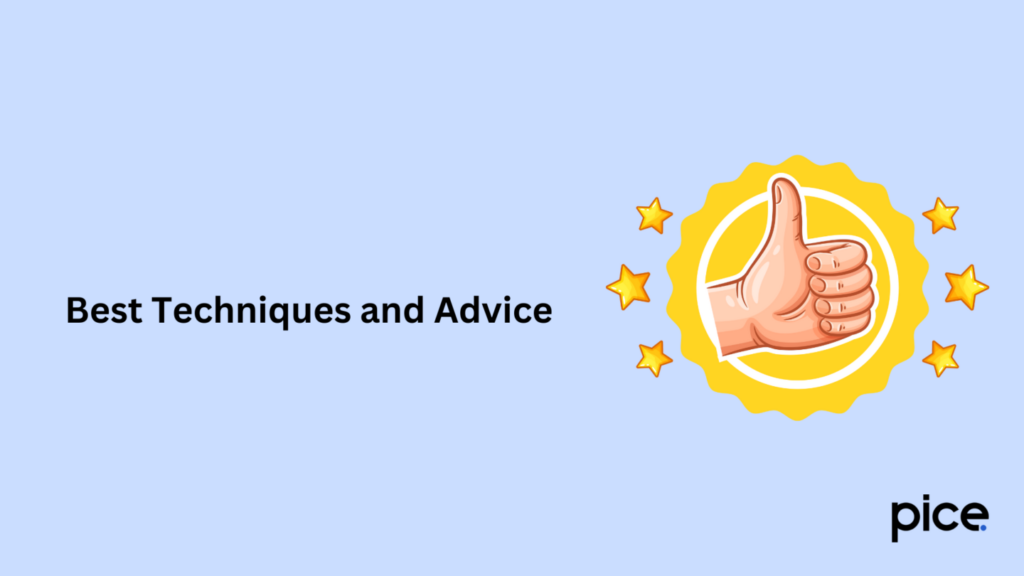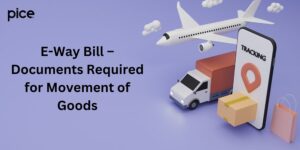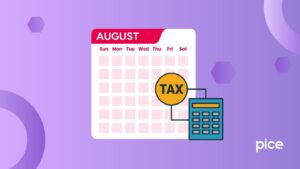Changes in GSTR 9 and 9C in FY23: What Businesses Need to Know
- 13 Sep 24
- 13 mins

Changes in GSTR 9 and 9C in FY23: What Businesses Need to Know
Key Takeaways
- Accurate ITC Reporting: Ensure precise ITC reporting under new GSTR-9 rules to avoid reconciliation issues.
- HSN Code Mandate: Businesses with turnover above ₹5 crores must disclose HSN codes at a 6-digit level from FY 2021-22.
- Exemption for Small Businesses: No GSTR-9/9C filing required for businesses with turnover up to ₹2 crores for FY 2022-23.
- Regular Reconciliations: Reconcile turnover, ITC, and liabilities across GSTR forms and financials for compliance.
- Mandatory GSTR-9C Disclosures: Turnover and ITC disclosures are now compulsory in GSTR-9C for better accuracy.
GSTR forms are crucial for filing GST returns in India. They provide the government with information on a taxpayer's transactions, purchases and all tax obligations. This enables authorities to collect taxes and oversee tax compliance effectively. Businesses must file forms such as GSTR-1, GSTR-3B, and GSTR-9 on a periodic basis in order to comply with GST requirements, maintain transparency and avoid fines.
This blog offers insights into annual return filing, essential reconciliations, best practices and potential challenges to ensure seamless compliance with the recent changes in GSTR-9 and GSTR-9C.
Disclosures in Table Needs Revisions

Changes with regard to disclosure requirements for Form GSTR-9 (Annual Returns) that businesses must know:
- Table 4: Figures in B2B transactions, as well as amendments, credit notes and debit notes in categories other than B2C or rate-based services, cannot be displayed as net figures. These details will now be disclosed separately from FY 21-22 onwards in Tables 4I to 4L.
- Table 5: Exempted and Nil-rated supplies can be combined into one column of ‘Exempt’ or both may be shown separately. From FY 21-22, all non-GST supplies will be shown separately in Table 5F – Non-GST.
- Table 17: HSN (Harmonised System of Nomenclature) details for outward supplies are mandatory from FY 2021-22 onwards. You can use the consolidated data from GSTR-1 for Table number 17.
- HSN Disclosures: If the turnover exceeds ₹5 crores HSN codes must be disclosed at a 6-digit level and at a 4-digit level for B2B transactions if the turnover is less than ₹5 crores.
- Clarifications: Disclosures made in GSTR-1 Tables 9A, 9B, and 9C must also be reported in Tables 10 and 11 of GSTR-9.
Relaxations That Continue
Some previous relaxations in disclosure requirements still apply:
- Table 5: Amendments, credit notes & debit notes can still be shown as net figures.
- Table 6: ITC (Input Tax Credit) bifurcation into ‘inputs’ and ‘input services’ is not mandatory. The total value can be consolidated under ‘Inputs’. From the tax period FY 2019-20, this can be done under ‘Inputs’ and ‘Capital Goods’.
- Table 6: ITC under the Reverse Charge Mechanism (RCM) from registered and un-registered persons can be consolidated under the registered persons’ table.
- Table 7: All ITC reversals can be consolidated under Table 7H, but TRAN reversals must be shown separately.
- Part V: Reversal or availing of ITC in the previous year may not need to be filled in Tables 12 and 13.
- Tables 15, 16 and 18: Refund details, inward supplies, deemed supplies and HSN inward details remain optional as earlier.
ITC Reporting in GSTR-9 Annual Return Form
When filing the GSTR-9 form, an important aspect to consider is the accurate disclosure of the Input Tax Credit (ITC). The changes in the reporting of ITC under GSTR-3B have introduced a new dynamic where ITC is initially claimed in Table 4.A.5 and then reversed under Table 4.B.1 or 4.B.2. This new reporting method can potentially lead to inaccuracies in the disclosure of Table 6B of GSTR-9. As a result, incorrect reconciliations from Table 8 may occur when compared with GSTR-2A.
Let us use an example based on the data from GSTR-3B for the financial year 2022-23 to better understand this issue. In this scenario, the table-wise reported data is as follows:
- Table 4.A.5: IGST – ₹1 lakh, CGST & SGST ₹2 lakh each.
- Table 4.B.1: Reversal of IGST ₹ 0.15 lakh, CGST/SGST each at ₹0.30 lakh
- Table 4.B.2: Reversal of IGST to the extent of ₹0.20 lakh and CGST/SGST to the extent of ₹0.50 Lakh each.
The data above shows how the initial claim and reversal of ITC can result in differences being reported from the GSTR-9 form. This impacts the further reconciliation in Table 8 with GSTR-2A. For this reason, the ITC must be reported with high accuracy to remain compliant.
Net Input Tax Credit as per Table No.4C, CGST/SGST ₹1,20,000, IGST ₹65,000
| Table No. | Particulars | Integrated Tax | Central Tax | State/ UT Tax |
| 6A | Inward supplies (excluding imports and inward supplies liable to reverse charge but including services obtained from SEZs) | 1,00,000 | 2,00,000 | 2,00,000 |
| 6B | Inward supplies (excluding imports and inward supplies liable to reverse charge but including services obtained from SEZs) | 65,000 | 1,20,000 | 1,20,000 |
| 6M | Additional ITC claimed but not specified above (includes ITC reversals from 4.B.1 & 4.B.2 that were claimed and then reversed) | 35,000 | 80,000 | 80,000 |
| 6O | Total ITC claimed | 1,00,000 | 2,00,000 | 2,00,000 |
| 7C | Reversal as per Rule 42 (from 4.B.1) | 10,000 | 20,000 | 20,000 |
| 7D | Reversal as per Section 17(5) (from 4.B.1) | 5,000 | 10,000 | 10,000 |
| 7H | Other Reversal (from 4.B.2) | 20,000 | 50,000 | 50,000 |
| 7J | Net ITC available for utilisation | 65,000 | 1,20,000 | 1,20,000 |
| 8A | ITC as per GSTR-2A (minimum assumed) | 1,00,000 | 2,00,000 | 2,00,000 |
| 8B | Inward supplies (excluding imports and inward supplies liable to reverse charge but including services obtained via SEZs) | 65,000 | 1,20,000 | 1,20,000 |
| 8D | Difference | 35,000 | 80,000 | 80,000 |
| 8E | ITC available but not availed | 20,000 | 50,000 | 50,000 |
| 8F | ITC available but ineligible | 15,000 | 30,000 | 30,000 |
To be noted:
If the figures in Table GSTR-2A are higher than Table 6A, then the difference may be reported under the section titled “Table 8E ITC available but not availed” or “Table 8F ITC available but ineligible”. For example, the vendor may have issued a credit note to your organisation (the recipient). However, that specific credit was not accepted by you and therefore this could be why there is no match.
Moreover, since October 2022, the law was further amended. The Finance Act, 2022 makes it necessary to use GSTR-2B for the reconciliation process as well. However, the real-time reconciliations in table through GSTR-2B on the GST portal started to happen from January 2022 onwards. This left a gap in terms of ITC being reconciled for the financial year - 2022/23.
Important Details in GST Annual Return Forms

Below are a few essential details for filing GST Annual Return Forms:
- Taxpayers with an aggregate annual turnover of up to ₹2 crores are not required to file the annual return in form GSTR-9/9A for FY 2022-23. Consequently, if GSTR-9 is not filed, GSTR-9C is also not needed.
- All the taxpayers having turnover of more than ₹5 crores need to fill GSTR-9C. Businesses with a turnover of ₹2 crores to less than ₹5 crore are only required to file GSTR-9 and not GSTR 9C.
- According to Table 4, the liability (including adjustments in Table 10 & 11) should be considered the final obligation as per the books. This includes the additional liability shown in GSTR-3B and Form DRC-03 during the financial year.
- Transactions of the previous financial year can be reported in the next Financial Year till 30th November, 2023 as per extended timelines under Notification No. 18/2022-CT.
- It is important — to avoid departmental disputes — for comprehensive reconciliations based on the table level and done so which allows coverage as well. Table 7J needs to be in line with the input tax credit claim at the GSTR-3B level.
- All payments should be made using Form DRC-03. The restriction placed on ITC by CGST Rules is not properly used as per Section 49(4) read with Rule 86(2). The functionality of the above utilisation of ITC is currently available on the GST portal.
- Confirms that GSTR-9 Table 8 still considers GSTR-2A. Yet, there has been a recent change in CGST Rules to recommend the GSTR-2B for ITC reconciliation. Taxpayers can raise a grievance on the GST portal if there are notable discrepancies between GSTR 2A and 2B.
- The verification and credit matching on ITC claims is now against GSTR-2B vs. GSTR-3 to be done at the time of filing Form DRC-01C. So, in light of the above notifications may not be relevant or appropriate based on disclosures made under Table 8 in GSTR-9.
GSTR-9 C Reconciliation Statement Form
Here are the changes made in the GSTR-9C, the reconciliation statement form, that you need to know:
- Turnover Reconciliation: Revenue that is unbilled at the start of the year can now be integrated with a disclosure in Table 5O through Table 5B. However, other turnover reconciliations from respective Tables 5C to 5N must be shown separately and cannot be combined under Table 5O in a single disclosure. Previously, up until FY 2021-22, these could be disclosed collectively in Table 5O.
- ITC Details in Tables 12B & 12C: Showing ITC details in Table 12B and Table 12C is no longer optional. It is now mandatory to disclose this information.
- New GST Rate for Brick Manufacturing: The new rate is provided on the Brick Manufacturing table at 6% (3% CGST & 3% SGST).
- Optional Table 14: In the GSTR-2, you need to enter expense-wise ITC. However, it remains optional. This info will be available even from the disclosure in clause 44 of Tax Audit Form 3CD.
- Pre-requisites: Before filing GSTR-9 and GSTR-9C, make sure to file all forms of GSTR-1s & 3Bs for FY 2022–23.
Note: Form GSTR-9 and Form GSTR-9C, once filed cannot be amended. Filing both at the same time is also suggested to make sure that taxpayers complete everything accurately.
GST Reconciliations Needed
Reconciling your GST data is crucial for accurate reporting and compliance. Here are the key reconciliations you should undertake:
- Comparing your turnover in the Audited Financial Statements (AFS/Books) with Table 5A for all GSTINs.
- With Table 17 now being mandated, use it for internal check procedures against Table 5N.
- Match the liability in your books with the liability shown in GSTR-3B and DRC-03, including Reverse Charge Mechanism (RCM) liabilities.
- Ensure that the rate-wise tax obligations according to workings vs rate-wise liability align in your books.
- Compare GSTR-1 vs. GSTR-3B. It will help you update outward taxes in GSTR-9 more easily.
- Reconcile the credit in your books with the credit in GSTR-3B. Identify any excess ITC claims or missed ITC to be claimed by November 30, 2023, via October 3B returns.
- Verify the closing balance (both cash and credit) in your books against the GST portal for all GSTINs.
- Validate and document spill transactions from the previous fiscal year and track them for the next fiscal year.
- Identify any rectifications and amendment options made beyond the November 30 deadline, revised from September 20.
These reconciliations ensure that your GST returns get filed correctly. In addition, taxpayers should note that invoice-level reconciliations are a value-added practice in the filing process. It makes annual return filing efficient and errors made while preparing data for annual reviews are minimised.
Best Techniques and Advice

When it comes to keeping your records straight, always aim for detailed documentation. This way, it will help you go through compliance checks without any problems. To manage your ITC, it is smart to keep a close eye on what you have claimed, reversed and reclaimed. This helps you maximise your tax benefits efficiently.
Additionally, when you are handling amendments retain the original invoice details. This is crucial for accurate reporting in your GSTR-9. And speaking of GSTR-9, reconcile your GSTR-2B ITC with your books to ensure everything lines up perfectly.
If you have any unclaimed ITC, record it as an expense in your books and look into ways to recover it. This helps keep your accounts organised and gives you a shot at getting that money back. Lastly, put together a thorough annual GST report which includes all your filed returns, reconciliations - outward, inward & RCM, variances, and recommendations for internal accounting.
Advanced Problems and Proper Solutions
Here are solutions to some common issues taxpayers encounter while filing GSTR-9 and GSTR-9C.
- Report past year's liabilities in the corresponding year's GSTR-9. This will avert double reporting and differential balance explaining any reconciliation of discrepancies in table.
- Credit notes raised in the next financial year should be disclosed in that year. Not the previous one. Clarify this in your GSTR-9.
- Use Table 6M for ITC claimed and reversed in the current year, simplifying books reconciliations for the tax duration. Tables 6B and 6H are used for auto-populating data in Table 8 for GSTR 2A reconciliation.
- Disclose ITC, that has not been maintained in deferred ledgers, in Table 13 of GSTR-9 and Table 12A of GSTR-9C.
- Understand the differences between Table 8C vs. Table 13 and report accordingly.
- Ensure ITC excess claim details match GSTR 2B data according to the valid tax invoice to analyse Table 8D.
- Lapsed ITC is not automatically deducted from your electronic credit ledger in Table 8K.
- Report negative ITC in Table 4C of GSTR 3B and adjust accordingly in Table 9.
- Interest applies to late tax liability payment of taxes from July 1, 2017. Understand the rates and conditions for different types of liabilities - RCM and output liability, irrespective of ITC balance availability.
Conclusion
It might be difficult to file GST yearly returns, particularly after the latest changes in GSTR-9 and 9C. However, it is crucial to keep up with any modifications to the GST requirements in order to ensure that the business is carried out properly.
Additionally, you can improve your tax management and comply with legal obligations by doing this. This blog helps you in avoiding unnecessary complications contributing to a smoother and more efficient tax process.
💡If you want to pay your GST with Credit Card, then download Pice Business Payment App. Pice is the one stop app for paying all your business expenses.
 By
By 
















